Abstract
Herrnstein and Heyman (1979) showed that when pigeons' pecking is reinforced on concurrent variable-interval variable-ratio schedules, (1) their behavior ratios match the ratio of the schedules' reinforcer frequencies, and (2) there is more responding on the variable interval. Since maximizing the reinforcement rate would require responding more on the variable ratio, these results were presented as establishing the primacy of matching over maximizing. In the present report, different ratios of behavior were simulated on a computer to see how they would affect reinforcement rates on these concurrent schedules. Over a wide range of experimenter-specified choice ratios, matching obtained — a result suggesting that changes in choice allocation produced changes in reinforcer frequencies that correspond to the matching outcome. Matching also occurred at arbitrarily selected choice ratios when reinforcement rates were algebraically determined by each schedule's reinforcement-feedback function. Additionally, three birds were exposed to concurrent variable-interval variable-ratio schedules contingent on key pecking in which hopper durations were varied in some conditions to produce experimenter-specified choice ratios. Matching generally obtained between choice ratios and reinforcer-frequency ratios at these different choice ratios. By suggesting that reinforcer frequencies track choice on this procedure, instead of vice versa, this outcome questions whether matching-as-outcome was due to matching-as-process in the Herrnstein and Heyman study.
Keywords: concurrent VI VR, matching, maximization, key peck, pigeons
Full text
PDF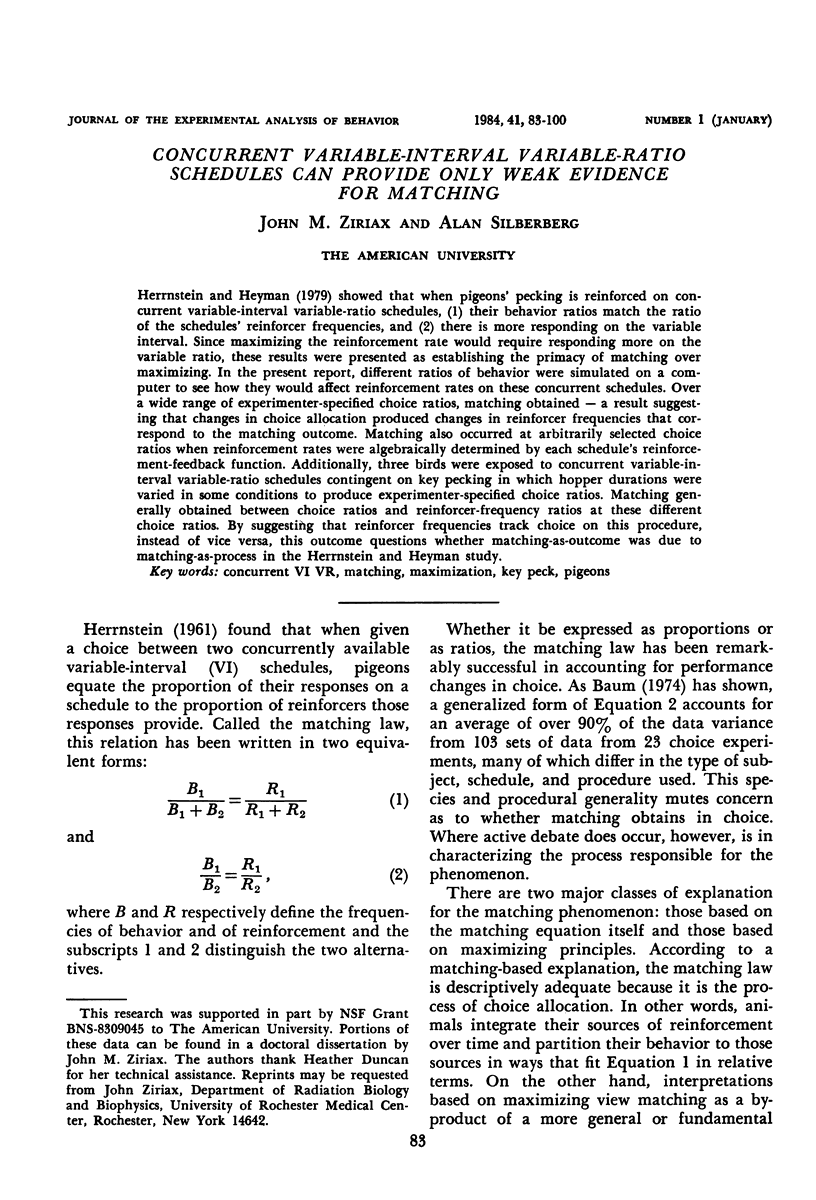
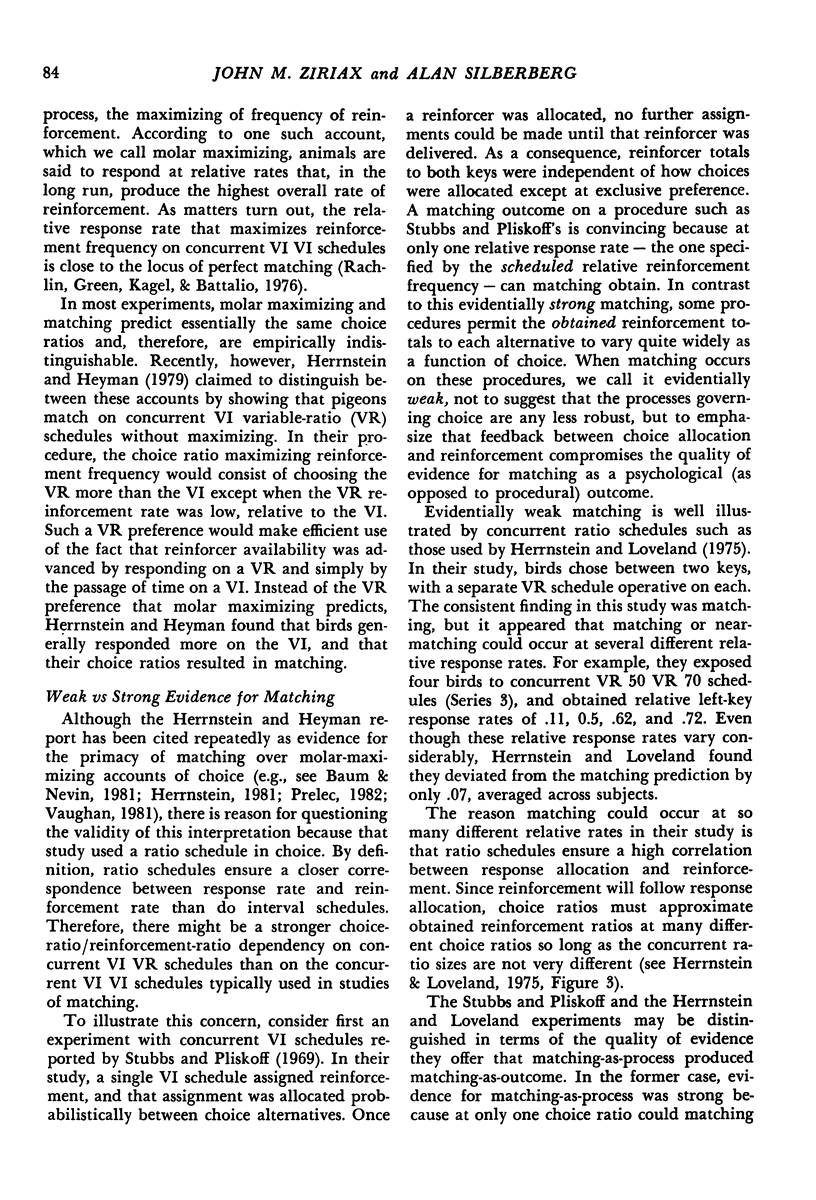
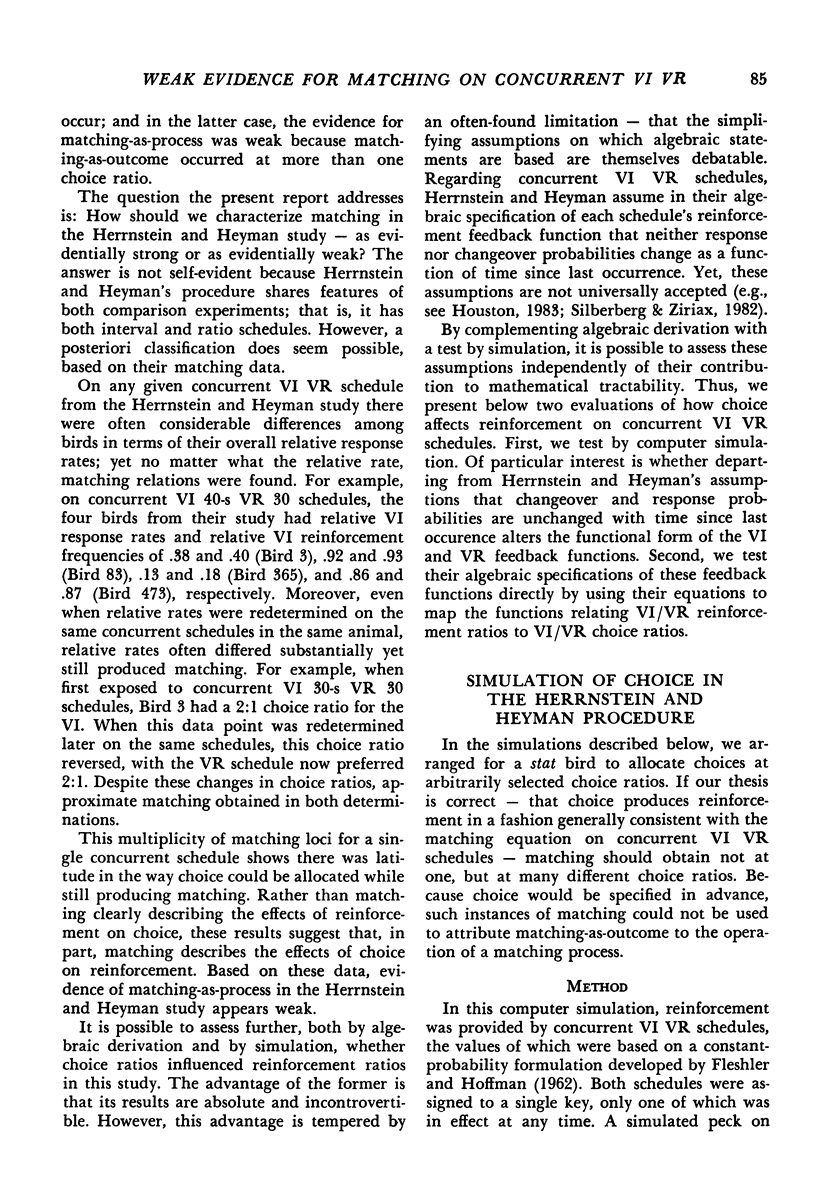
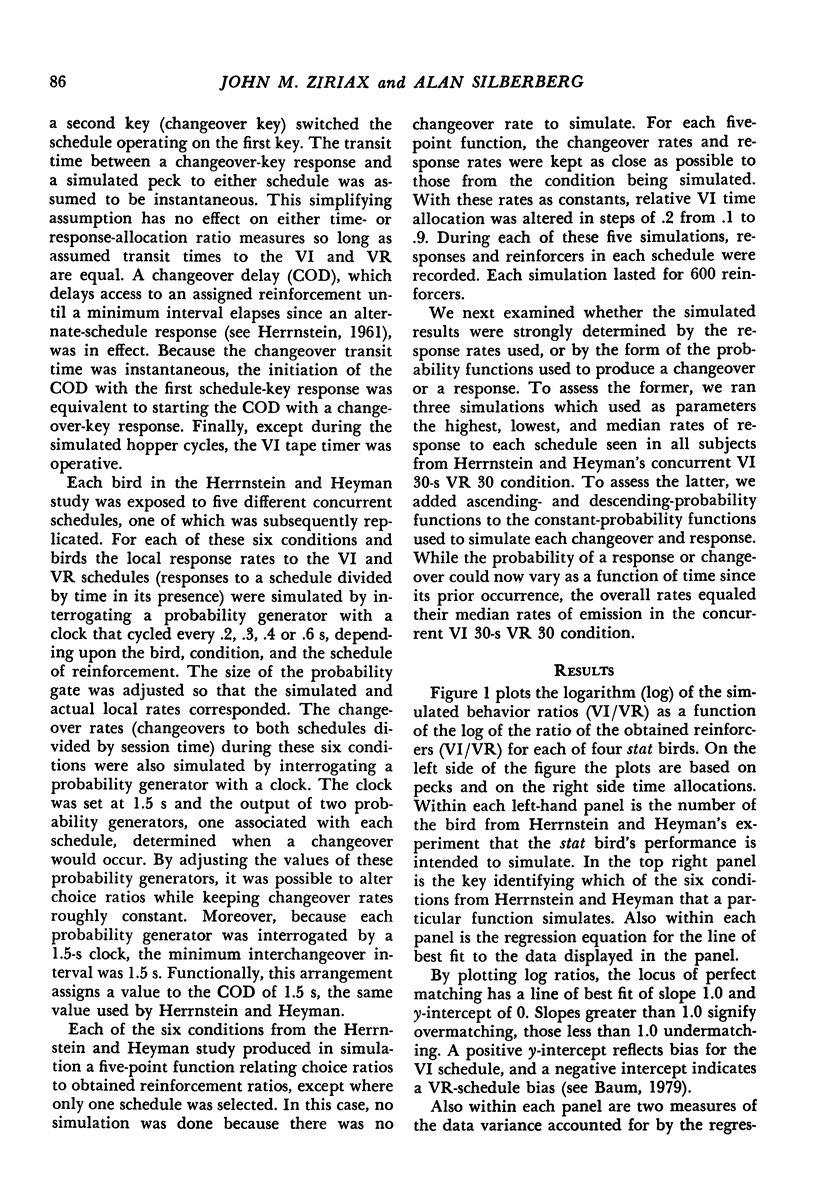
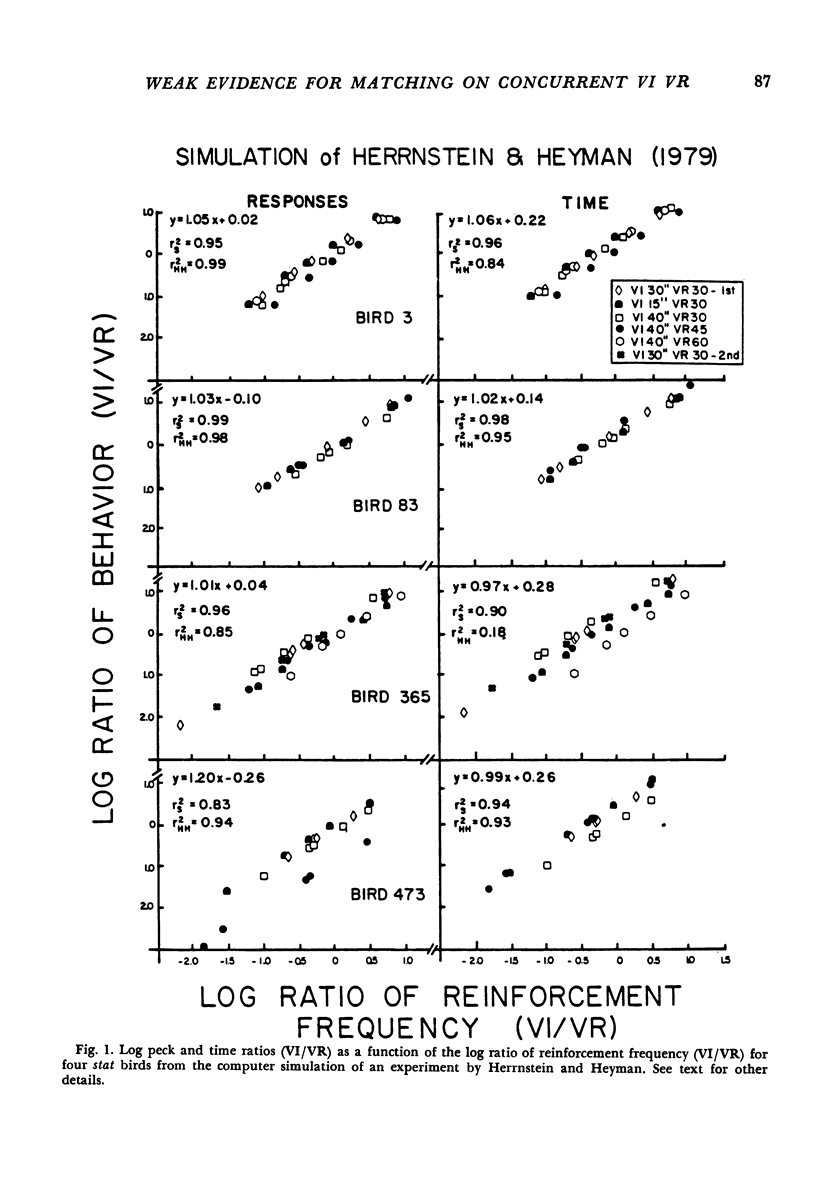
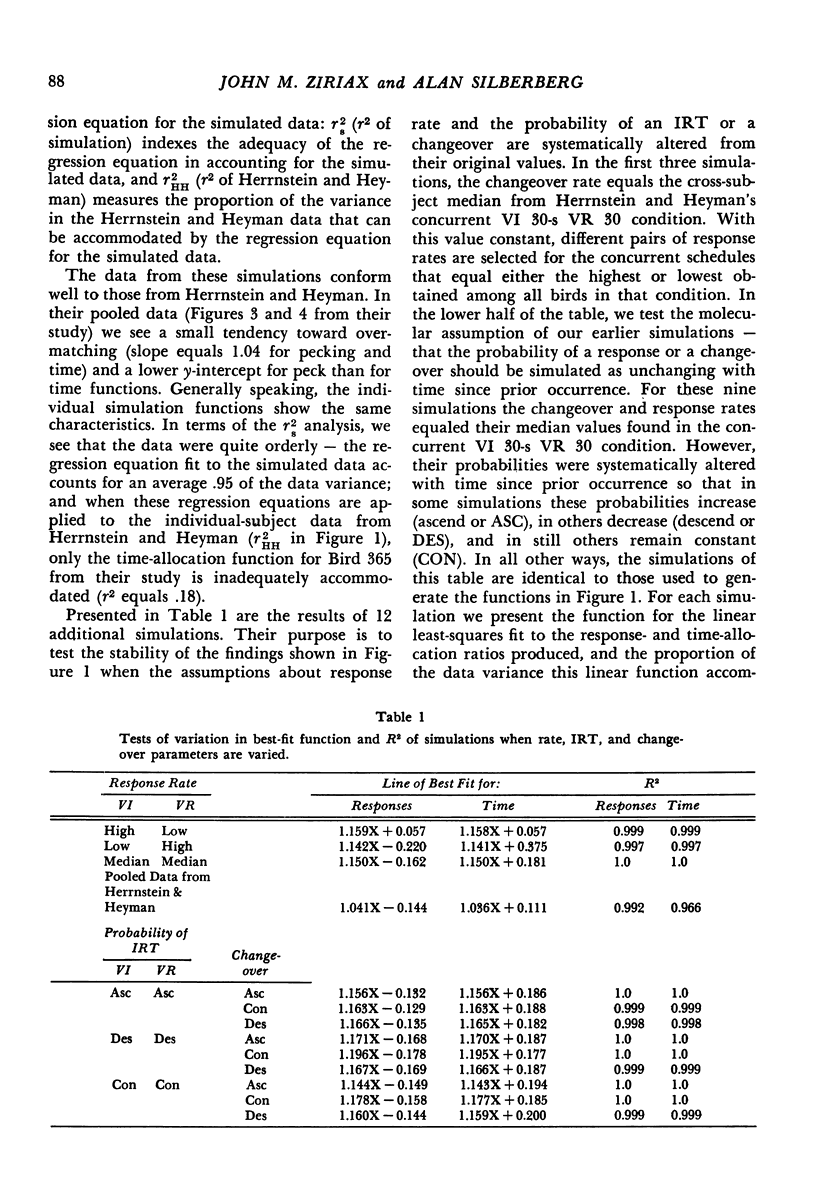
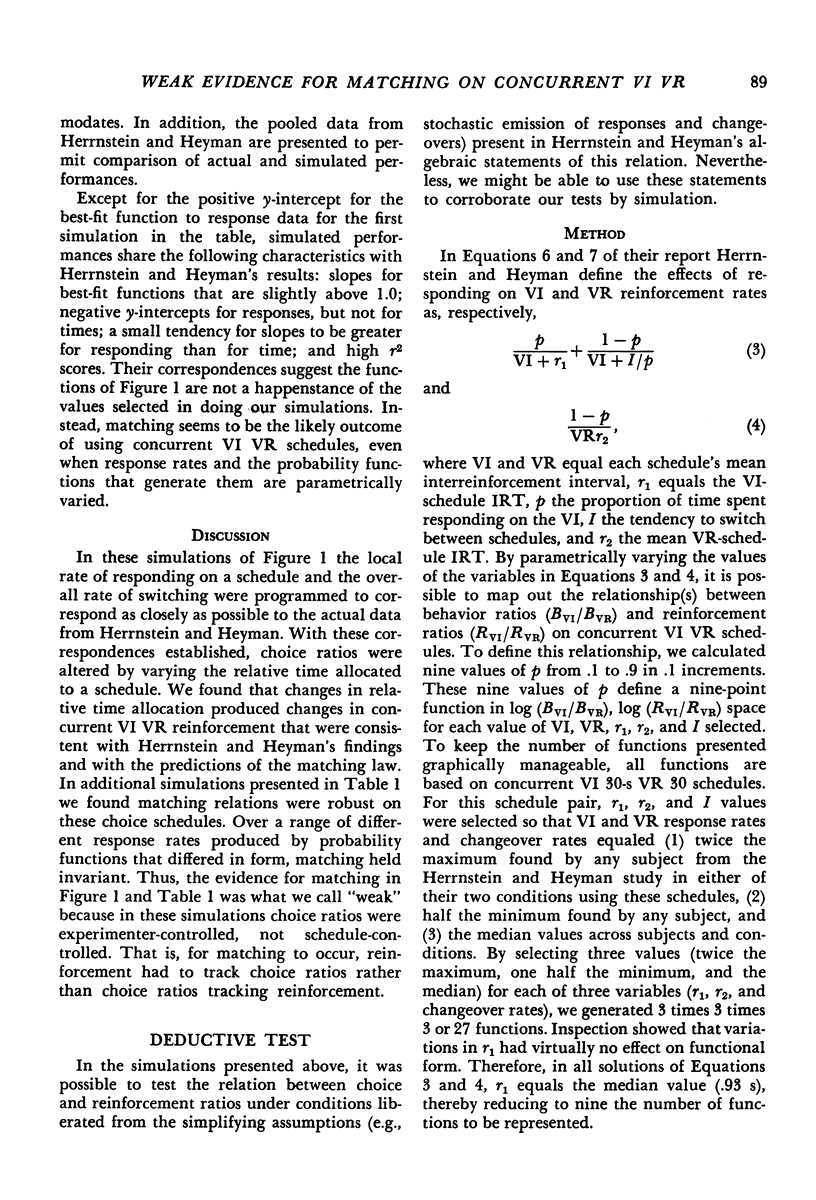
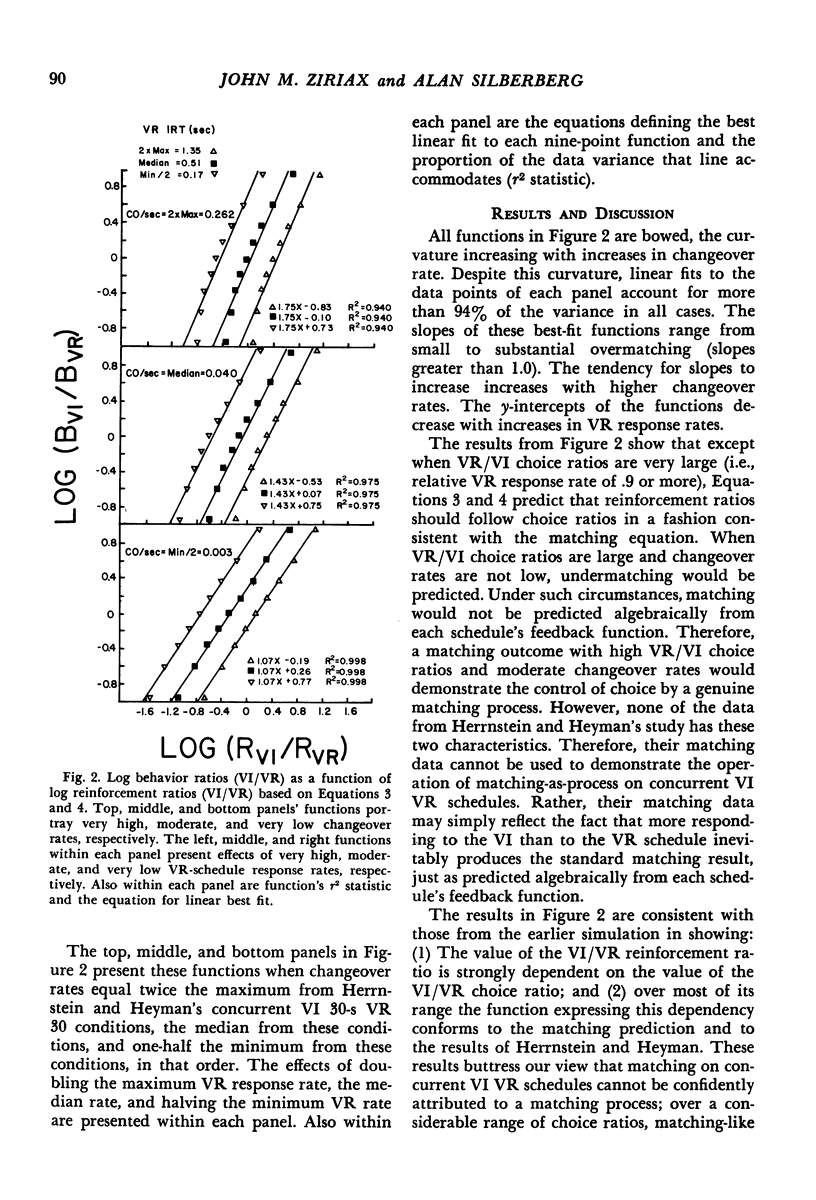
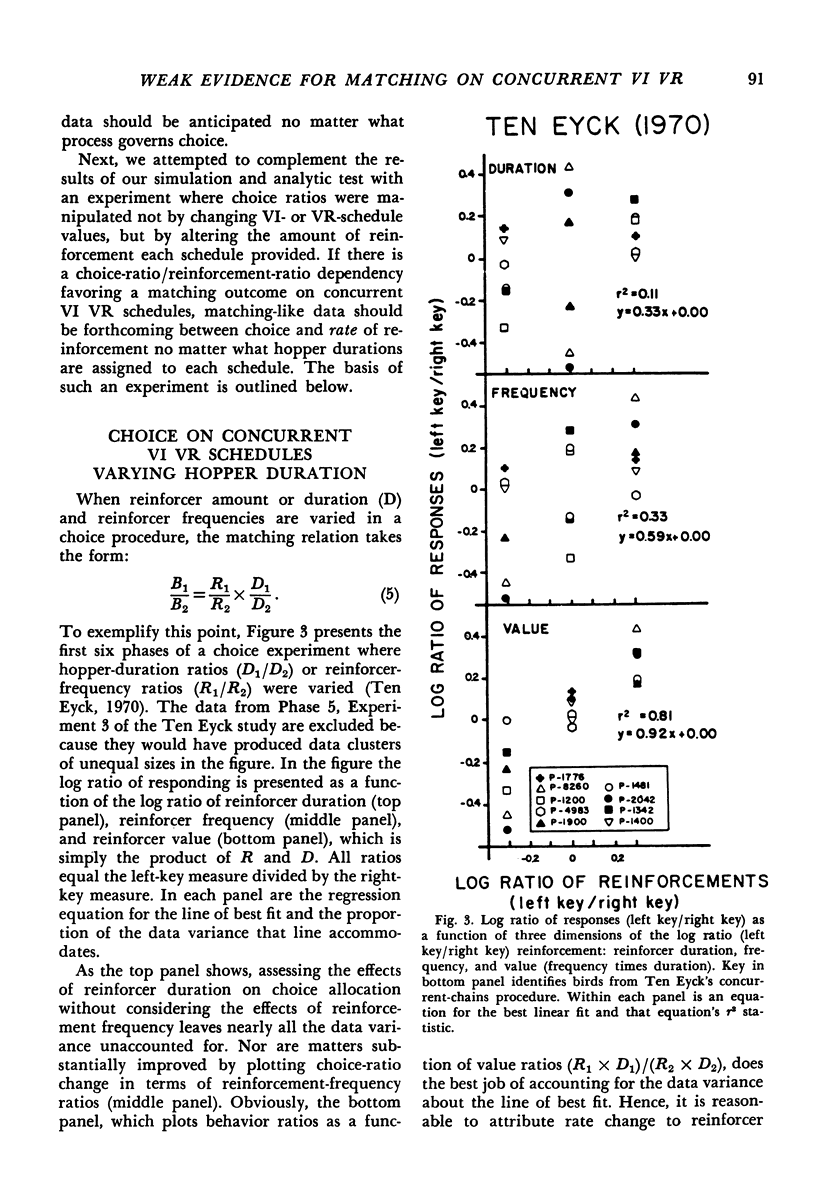
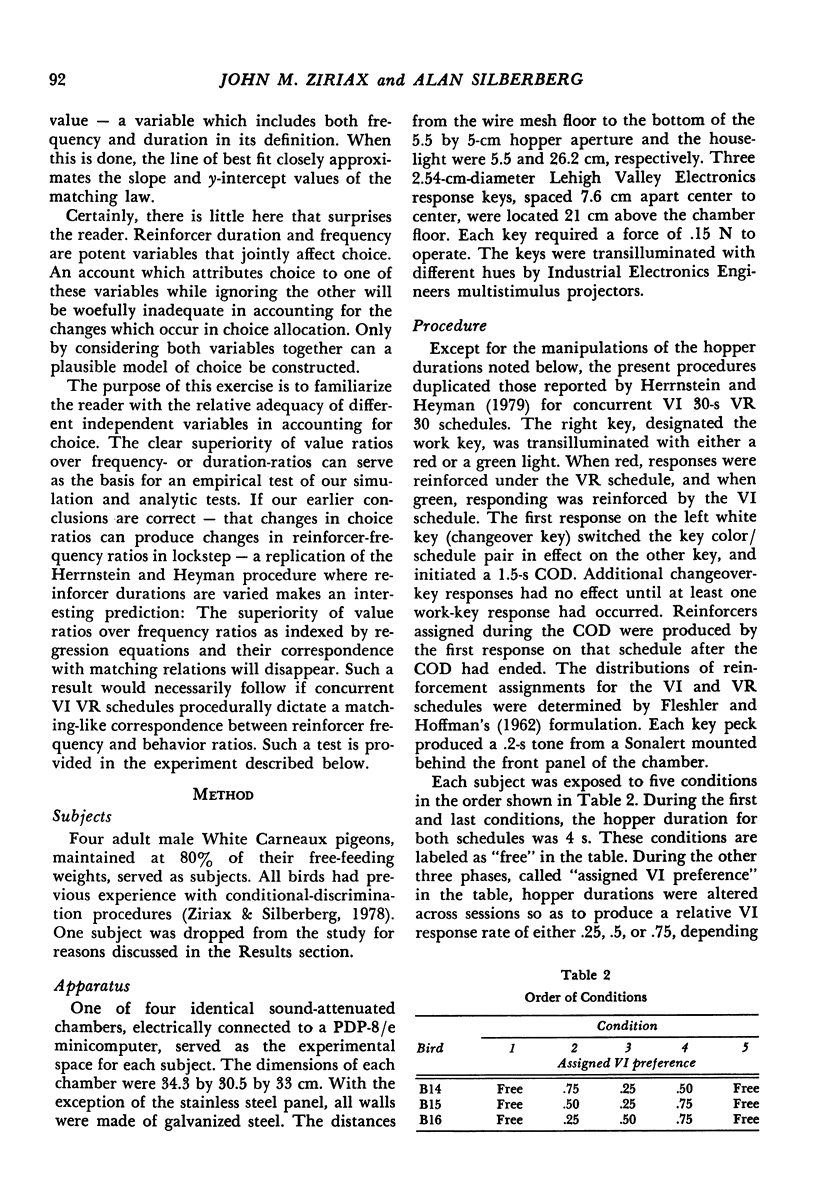


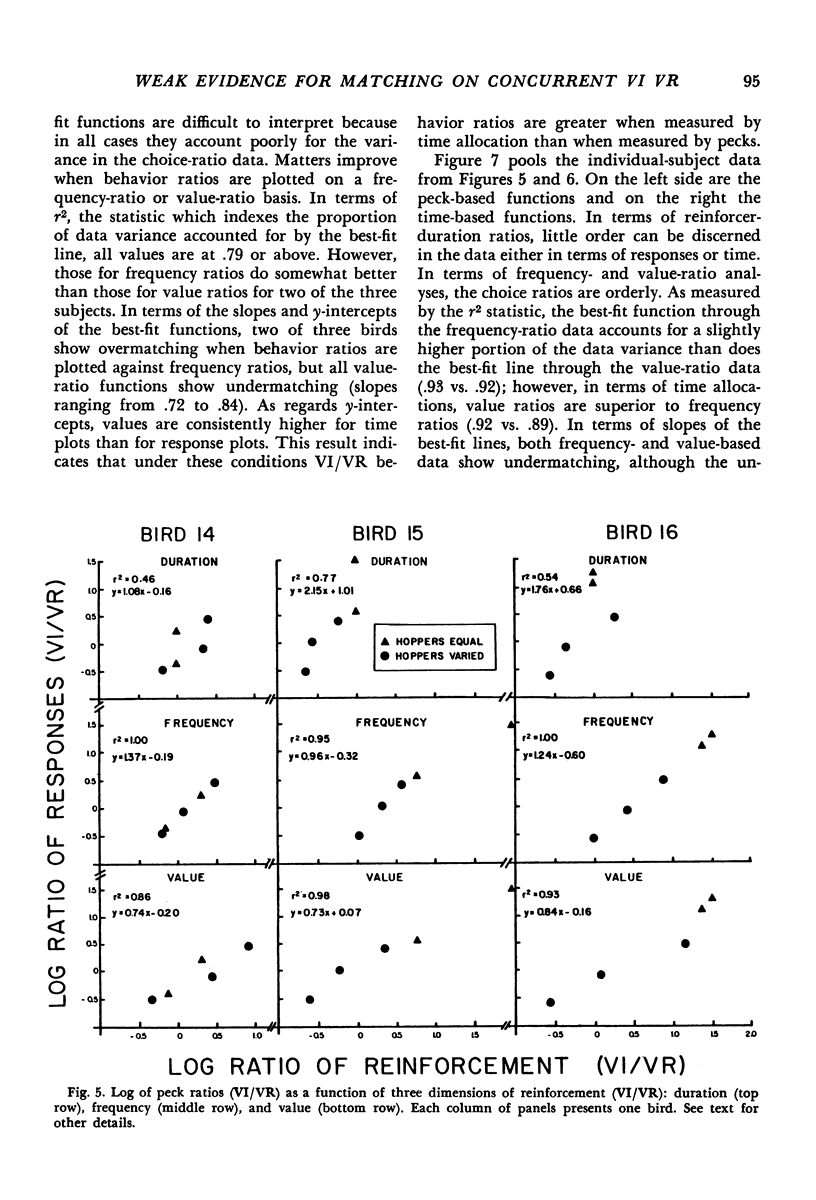
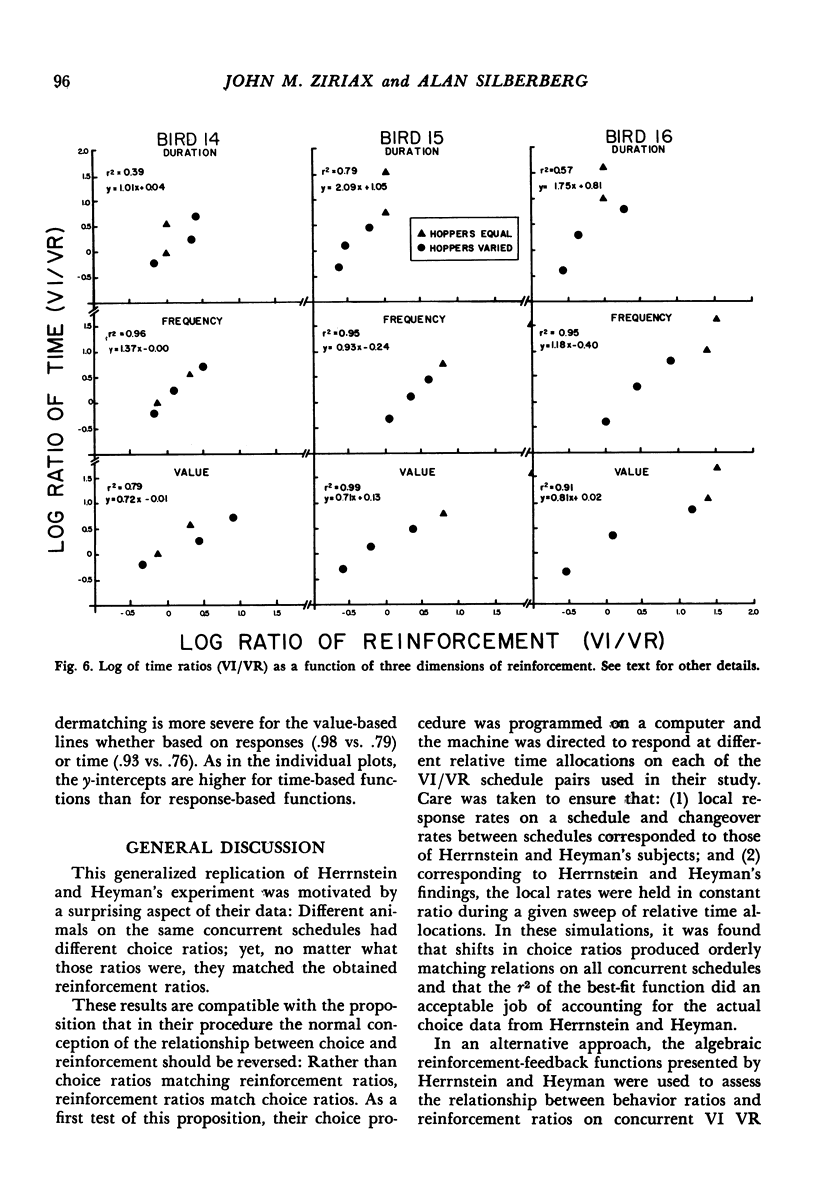


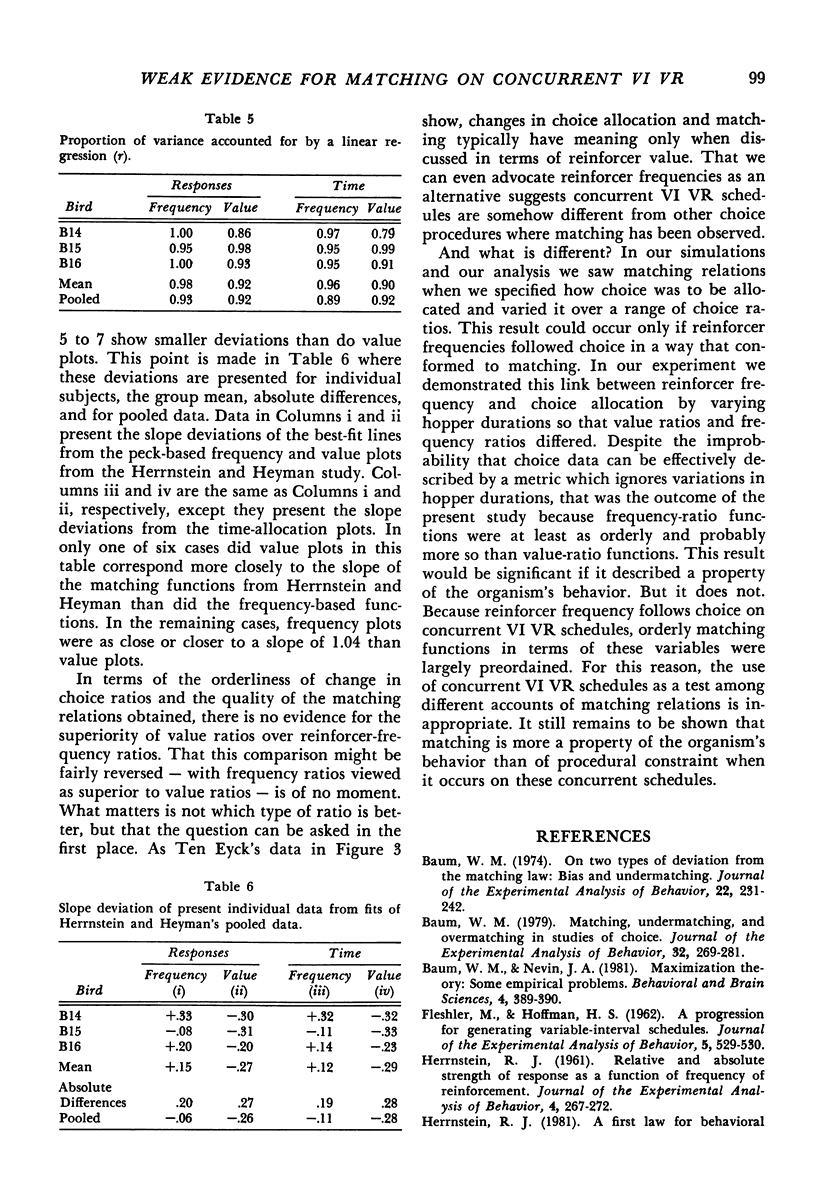
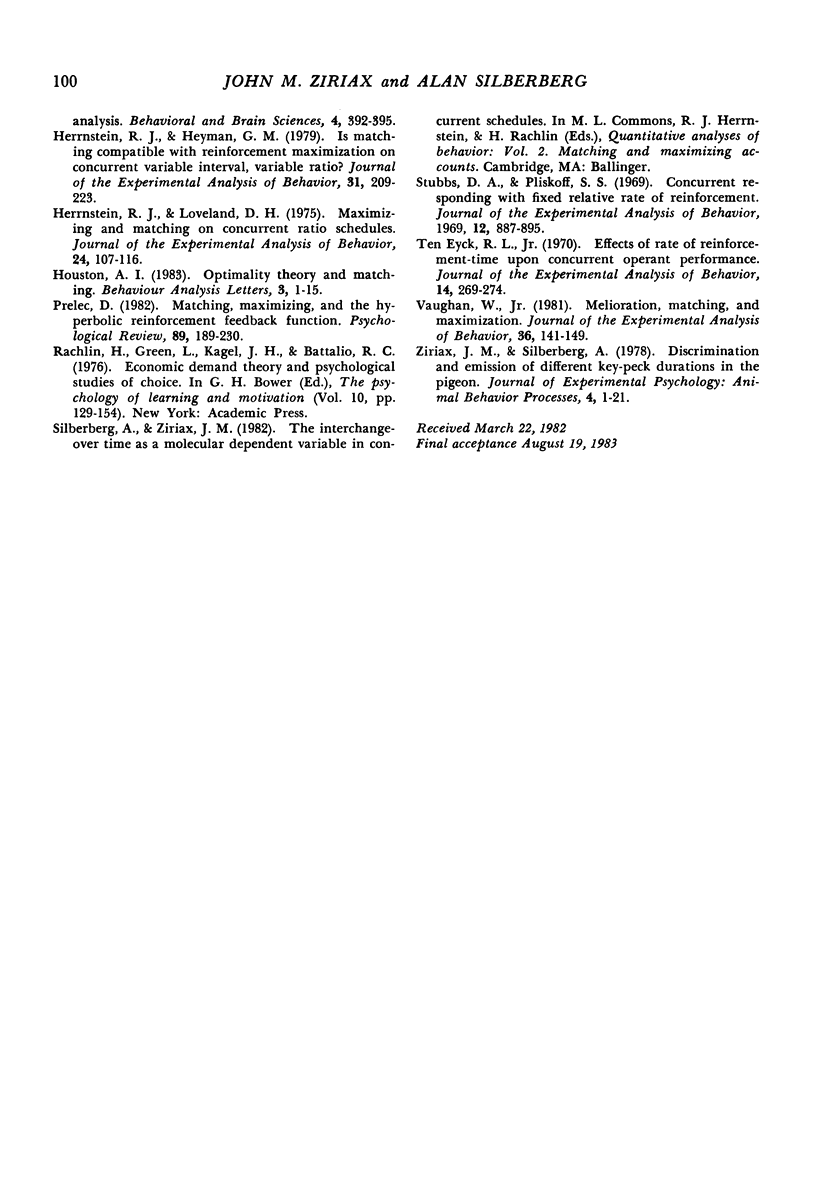
Selected References
These references are in PubMed. This may not be the complete list of references from this article.
- Baum W. M. Matching, undermatching, and overmatching in studies of choice. J Exp Anal Behav. 1979 Sep;32(2):269–281. doi: 10.1901/jeab.1979.32-269. [DOI] [PMC free article] [PubMed] [Google Scholar]
- Baum W. M. On two types of deviation from the matching law: bias and undermatching. J Exp Anal Behav. 1974 Jul;22(1):231–242. doi: 10.1901/jeab.1974.22-231. [DOI] [PMC free article] [PubMed] [Google Scholar]
- FLESHLER M., HOFFMAN H. S. A progression for generating variable-interval schedules. J Exp Anal Behav. 1962 Oct;5:529–530. doi: 10.1901/jeab.1962.5-529. [DOI] [PMC free article] [PubMed] [Google Scholar]
- HERRNSTEIN R. J. Relative and absolute strength of response as a function of frequency of reinforcement. J Exp Anal Behav. 1961 Jul;4:267–272. doi: 10.1901/jeab.1961.4-267. [DOI] [PMC free article] [PubMed] [Google Scholar]
- Herrnstein R. J., Heyman G. M. Is matching compatible with reinforcement maximization on concurrent variable interval variable ratio? J Exp Anal Behav. 1979 Mar;31(2):209–223. doi: 10.1901/jeab.1979.31-209. [DOI] [PMC free article] [PubMed] [Google Scholar]
- Herrnstein R. J., Loveland D. H. Maximizing and matching on concurrent ratio schedules. J Exp Anal Behav. 1975 Jul;24(1):107–116. doi: 10.1901/jeab.1975.24-107. [DOI] [PMC free article] [PubMed] [Google Scholar]
- Stubbs D. A., Pliskoff S. S. Concurrent responding with fixed relative rate of reinforcement. J Exp Anal Behav. 1969 Nov;12(6):887–895. doi: 10.1901/jeab.1969.12-887. [DOI] [PMC free article] [PubMed] [Google Scholar]
- Ten Eyck R. L. Effects of rate of reinforcement-time upon concurrent operant performance. J Exp Anal Behav. 1970 Nov;14(3):269–274. doi: 10.1901/jeab.1970.14-269. [DOI] [PMC free article] [PubMed] [Google Scholar]
- Vaughan W. Melioration, matching, and maximization. J Exp Anal Behav. 1981 Sep;36(2):141–149. doi: 10.1901/jeab.1981.36-141. [DOI] [PMC free article] [PubMed] [Google Scholar]


